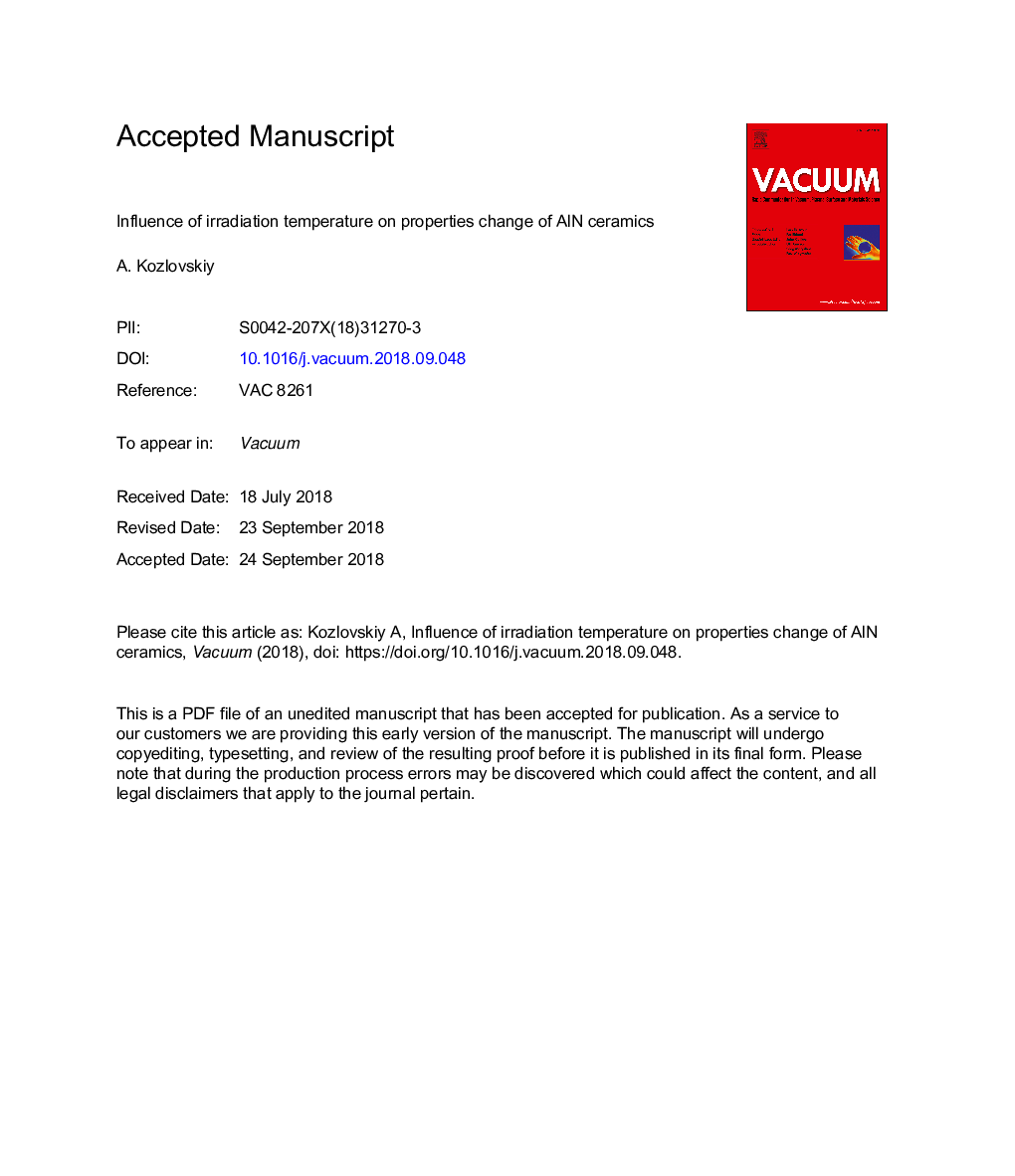| Article ID | Journal | Published Year | Pages | File Type |
|---|---|---|---|---|
| 11026544 | Vacuum | 2018 | 17 Pages |
Abstract
The paper presents the results of studying the effect of irradiation of Fe7+ ions with an energy of 1.5 MeV/nucleon on structural properties of AlN ceramics at an irradiation temperature of 300, 500, 700 and 1000â¯K. The choice of ion type and irradiation conditions was made by studying the processes of defect formation as a result of particles effect with energies close to fission fragments of nuclear fuel (â¤90-100â¯MeV) and temperatures 0.1-0.3 Tmelt, typical for annealing defects. From the data obtained by the XRD, SEM, EDX methods, it is established that an increase in irradiation temperature above 500â¯K leads to a reduction in distortions and deformation of the crystal lattice under irradiation. It was found that with an increase in the irradiation dose, amorphous-like grains with a high oxygen content are formed in the structure, which are characteristic for the impurity phase of Al2O3, the content of which in the ceramic structure does not exceed 5%. In this case, an increase in the irradiation temperature leads to a decrease in impurity phase concentration in the structure. It has been established that for samples irradiated at high temperatures 700-1000â¯K, the decrease in strength properties is less than for samples irradiated at a temperature of 300 and 500â¯K. Such a difference can be explained by partial annealing and annihilation of defects as a result of elevated temperatures. The decrease in thermal conductivity coefficient in irradiated samples is due to an increase in defects concentration in structure, as well as a decrease in their mobility.
Related Topics
Physical Sciences and Engineering
Materials Science
Surfaces, Coatings and Films
Authors
A. Kozlovskiy,
